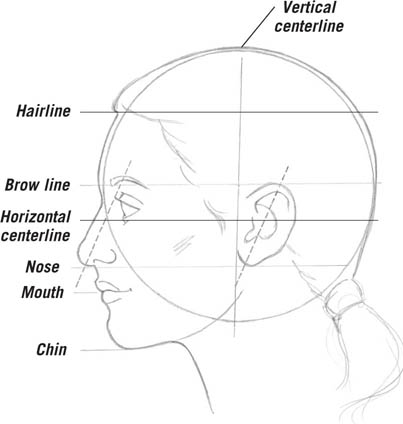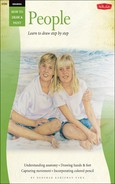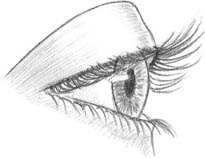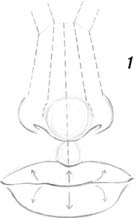The elements of each separate part of the body must be in proportion, just as the entire body must be proportional. We need to know the accurate proportions for drawing parts like the human face. Understanding the proper proportions and using placement guidelines helps you determine the correct size and location of each facial feature. Whether you are viewing the subject from front, in profile, or from three-quarter view, the basic proportions are the same.

FRONTAL VIEW The head looks like a ball that has been flattened on the sides, elongating it. Divide it in half horizontally and vertically. Divide the bottom portion in half again to show where the end of the nose will be and once more to see where the bottom lip ends. The hairline is about one-third down from the top of the head to the eyes, and the brow line is just above the ears. The eyes are centered between the vertical centerline and the sides of the head.

PROFILE VIEW To draw an adult head in profile, start with a large circle for the cranial mass. The nose, lips, and chin all fall outside this circle, whereas the eyes and ear remain inside. The slanted, dashed lines indicate the parallel slant of the nose and the ear. Note that the ear is placed just behind the vertical centerline and starts to the right of the horizontal centerline. The horizontal placement lines are the same as in the frontal view.

THREE-QUARTER VIEW When the face is turned to the side, the vertical centerline also shifts—in other words, the centerline isn’t centered; rather, three-fourths of the face is to one side of it. This perspective affects the features’ proportions, with nearer items appearing larger; for example, the eye closer to the viewer appears larger. And because the head is tilted slightly downward in this pose, the horizontal lines curve up around the head.










